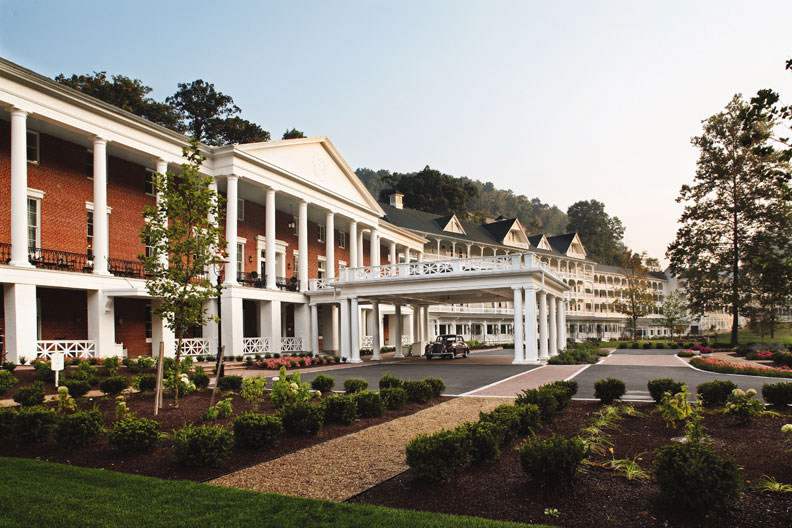
For hundreds of years, “taking the waters” at a resort reputed to have healing springs has been a way of life for those who could afford it. Baden Baden, Germany. Saint Moritz, Switzerland. Bath, England. Vichy, France. These are just some of the renowned European spas at which the ill and the well-to-do sought relief from their afflictions and their tensions. In the New World, those not inclined to travel to Europe, could visit any of a number of different locations in the United States. Saratoga Springs, New York. Warm Springs, Georgia. Hot Springs, Arkansas. At least one location in the Commonwealth of Pennsylvania ought to be included on that august list: Bedford Springs in Bedford County.
Over 200 years ago the Bedford Springs Hotel was established because of the benefits of the natural mineral spring water located on the property. This once humble medical retreat has evolved over the past two centuries into a modern luxury vacation resort.
The Bedford Springs is a natural mineral spring located approximately a mile and a half south of the town of Bedford, in southwestern Pennsylvania. Prior to the local settlers’ discovery of the mineral springs, the Native Americans inhabiting the area acknowledged and utilized their curative powers. William Defibaugh, a local historian, author, and collector in Bedford County, explains in his book The First Days at the Bedford Springs that a Native American legend describes the existence of a “Medicine Spring,” which occasioned members of the Tuscarora, Iroquois, and Shawnee to travel from the East-Coast to the springs to hold powwows. Native American tribes gathered peacefully around the revered springs to reap the alleged medicinal benefits.
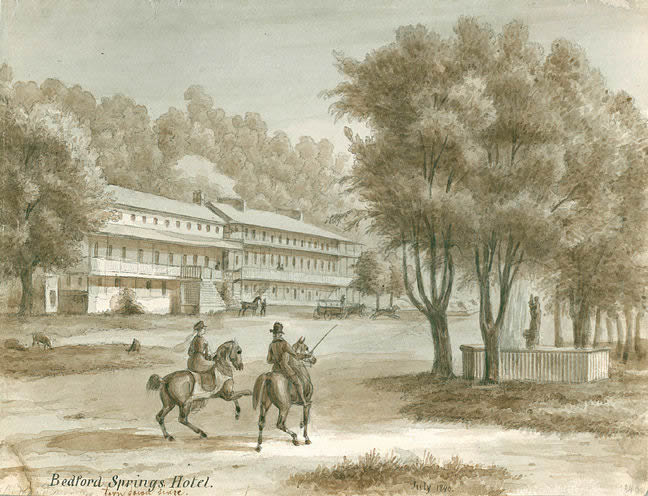
Collection of Spanierman Gallery, LLC, New York
The adoration of the springs expressed by the Native Americans drew the attention of the local settlers. There is a story suggested in the book The History of Bedford, Somerset, and Fulton Counties, Pennsylvania that in 1804, a local Bedford mechanic who suffered from rheumatic pains and severe leg ulcers drank from the springs and was comforted by the water’s effects on his body. After realizing the comforting effects of the water, he drank from and bathed in the water daily and was cured within weeks. This event caused the locals ailing from chronic diseases to seek out the therapeutic powers of the springs. Even if this event has been exaggerated, the knowledge that mineral water contained potential curative and healing powers would not have been unknown to the local inhabitants. The use of mineral springs to cure certain ailments was a popular practice at the time and had been for many years. This practice was generally referred to as “taking the waters.”
To understand the attraction of the Bedford Springs, it is helpful to know the history of mineral water as it was used for therapeutic reasons. According to Janet Valenza’s book Taking the Waters in Texas, the term “spa” originates from the Belgian town of Spa where an ironmaster’s health was improved after using the town’s iron-rich waters. For the past several hundred years, scientists have understood the chemical properties of mineral water. Balneotherapy, or the treatment of disease by bathing in mineral water, was popularized in the nineteenth century. According to Valenza, the “practice emphasizes how minerals in the water exert a therapeutic effect on the body.” Claims that the mineral water of Bedford Springs helped to cure certain ailments would be a major attraction to those seeking relief from their sicknesses.
John Anderson, a doctor from Bedford Country, was the first proprietor and founder of what would become the Bedford Springs Hotel. Once he heard about the characteristics of the mineral water, he purchased the property and planned to use the springs to treat his patients. The news about the medical properties of the springs traveled quickly and Dr. Anderson soon had more patients than available lodging. These patients camped in tents on the present day location of the golf course at the Bedford Springs Resort. Dr. Anderson was described as an “enterprising” man by the author(s) of The History of Bedford, Somerset and Fulton Counties. The book explains that he was not only a successful physician, but also a man that was “predestined to success in business.” Such a description helps to explain Dr. Anderson’s vision of the completion of a Hotel to accommodate his patients. Dr. Anderson may have seen the construction of the hotel not only as a way to solve his current accommodation issues, but also as a way to capitalize on a growing trend. Traveling to spas in the late 1700’s and early 1800’s had become a very popular activity, and Dr. Anderson likely planned to take advantage of it.
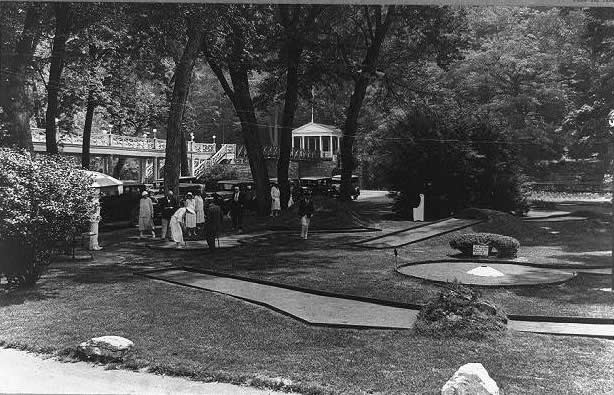
The construction of the first building of the Bedford Springs Hotel, the Stone Building, was completed in 1806. Defibaugh explains in his book that the Stone building was thought to be large enough to accommodate all of the guests at the springs; it was four times larger than any inn in Bedford at the time. History, however, would show that more construction was needed to accommodate all of the visitors of the nineteenth century.
As the trend toward resort vacationing increased in the United States, the Bedford Springs was well positioned to meet the demand. The Hotel no longer served solely as medicinal facility, but also as a woodland vacation retreat that could be enjoyed by both the sick and the healthy. As described in the pamphlet on the Bedford Springs’ history published by the Pennsylvania Department of Transportation and the Federal Highway Administration, visitors no longer had to endure the hardship of a long journey to the rurally located springs. Once turnpikes were constructed in the 1820’s, the journey to the Bedford Springs was made much easier. The advent of railways several decades later also drastically improved access to the Hotel for the urban residents of Mid-Atlantic cities. The predominantly wealthy visitors to the Hotel, who were predominantly wealthy, were able to escape the city for a while and enjoy the country during a time when few urban residents had such a privilege.
Visitors enjoyed an array of outdoor recreational activities along with the therapeutic activities involving the mineral springs. The activities available to guests included tennis, bowling, horseback riding, and fishing. One of the first golf courses in the United States was built at the Bedford Springs in 1896 and was designed by the renowned course architect Spencer Oldham. Golf is still enjoyed by many at the Hotel today.
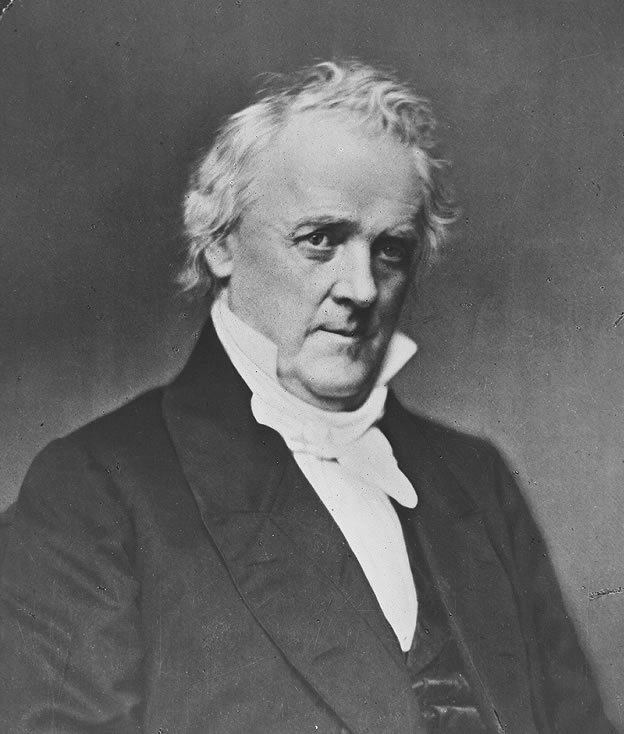
During the nineteenth century, the Bedford Springs Hotel had a long guest list of powerful and influential people. These individuals’ visits gave the Bedford Springs Hotel its humble, yet significant, place in history. According to a pamphlet produced by the Omni Bedford Springs Resort, Thomas Jefferson visited the Hotel in 1819 for several weeks to alleviate symptoms associated with acute rheumatism. He was not the only President to visit the Hotel. Ten presidents in total have made visits to the Bedford Springs. These include James K. Polk, who was the first to visit before he became President, Andrew Jackson, William Henry Harrison, John Tyler, Zachary Taylor, James Garfield, William Taft, Dwight Eisenhower, and Ronald Reagan and Pennsylvania’s own James Buchanan.
The President to visit the Bedford Springs Hotel most often was the Pennsylvania-born James Buchanan. Buchanan established the Bedford Springs as his Summer White House during his time in office. According to the pamphlet created by the Bedford Spring Resort, President Buchanan spent a total of 25 summers at the Hotel. The first trans-Atlantic cable, sent from Queen Victoria of England, was received by James Buchanan at the Bedford Springs Hotel. It was also at the Bedford Springs that Buchanan announced he would not run for reelection in 1860. Because of the large amount of time spent at Bedford Spring by President Buchanan, it is likely that many important documents were signed and many important decisions were made during his time there. The Bedford Springs pamphlet suggests that many of these important documents were signed on his simple Sheraton desk. President Buchanan’s antique desk is one of the many historical pieces of furniture currently decorating the Bedford Springs Hotel. It is said that Buchanan would not allow the desk to be replaced because his shirts fit perfectly inside the drawers.
After the Hotel’s high point in the late 1800’s and early 1900’s, the Bedford Springs, like many other American businesses, faced financial hardship because of the Great Depression. Americans had less money to spend on expensive vacations. For this reason, the Bedford Springs suffered financially. Defibaugh, as the resident historian of the Bedford Springs Hotel, explained in an interview that the Hotel went bankrupt in 1936. During that financial hardship, the Hotel sold much of its furniture and historical pieces. It is in this way that Mr. Defibaugh has been able to collect so much of the furniture and artifacts from the Bedford Springs. He later sold much of the furniture back to the Hotel. Because of collectors like Defibaugh, the Bedford Springs is able to be decorated with many original pieces.
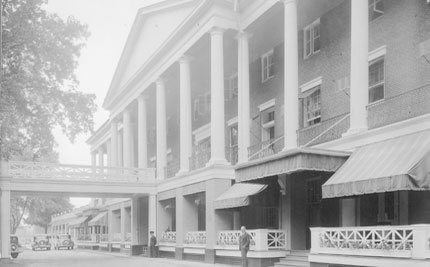
During World War II, the United States Government used the Bedford Springs Hotel as a school to train naval radio operators. Defibaugh recounted that the school graduated 5000 radio operators in total. Though the Bedford Springs was not a functioning hotel at the time, it was certainly being put to into use.
Early in 1945, the Hotel was used to house captured Japanese diplomats posted to Germany. These Japanese were kept at the Bedford Springs Hotel until late 1945 at which point they were sent back to Japan. Defibaugh explained that the local people of Bedford refused to supply food for the captives, so food needed to be provided from Washington.
The Bedford Springs Hotel reopened after the end of World War II. According to the Omni Bedford Springs website, the Hotel was designated a national historical landmark in 1984, and just two years after it closed its doors for nearly 20 years.
The Bedford Springs Hotel was restored to its original splendor and reopened in 2007. 120 million dollars were spent to restore the once popular hotel. The 2200 acre resort is currently managed by Omni Hotels and Resorts, which owns several other luxury properties. The Hotel is once again a popular destination for those seeking recreation and recuperation.
The Bedford Springs Hotel has played a subtle, yet significant, role in the history of the United States. It has been a destination of relaxation and recuperation for many people for nearly two centuries. Many powerful and famous people have spent leisurely retreats “taking the waters” and enjoying the natural surroundings. Like the timeless, simple design of President Buchanan’s desk, which sits in the lobby of the Hotel, the Bedford Springs Hotel will prove to be a source of timeless relaxation and recreation for years to come.
The Center wishes to thank the Spanierman Gallery, LLC, New York for their assistance in illustrating this article.
Sources:
- Defibaugh, William L. “Mr. Defibaugh on the Bedford Springs Hotel.” Personal interview. 24 Oct. 2009.
- Defibaugh, William L. The First Days of the Bedford Springs. Bedford, PA: WLD Productions, 2004.
- Herberling, Scott D. More than Mineral Water; A Collection of Images from Bedford Springs’ Past. Herberling Associates, Inc., 2008.
- The History of Bedford, Somerset and Fulton Counties, Pennsylvania. Chicago: Waterman, Watkins & Co., 1884.
- “Our History - Omni Bedford Springs Resort.” Omni Hotels | Luxury Hotels, Resorts, and Vacation Packages - Official Site. 8 Dec. 2009. <http://www.omnihotels.com/FindAHotel/BedfordSprings/OurHistory.aspx>.
- Valenza, Janet Mace. Taking the Waters in Texas Springs, Spas, and Fountains of Youth. Austin: University of Texas, 2000.
- Welcome to the Omni Bedford Springs Resort and Spa. Bedford, Pennsylvania: Omni Hotels.
